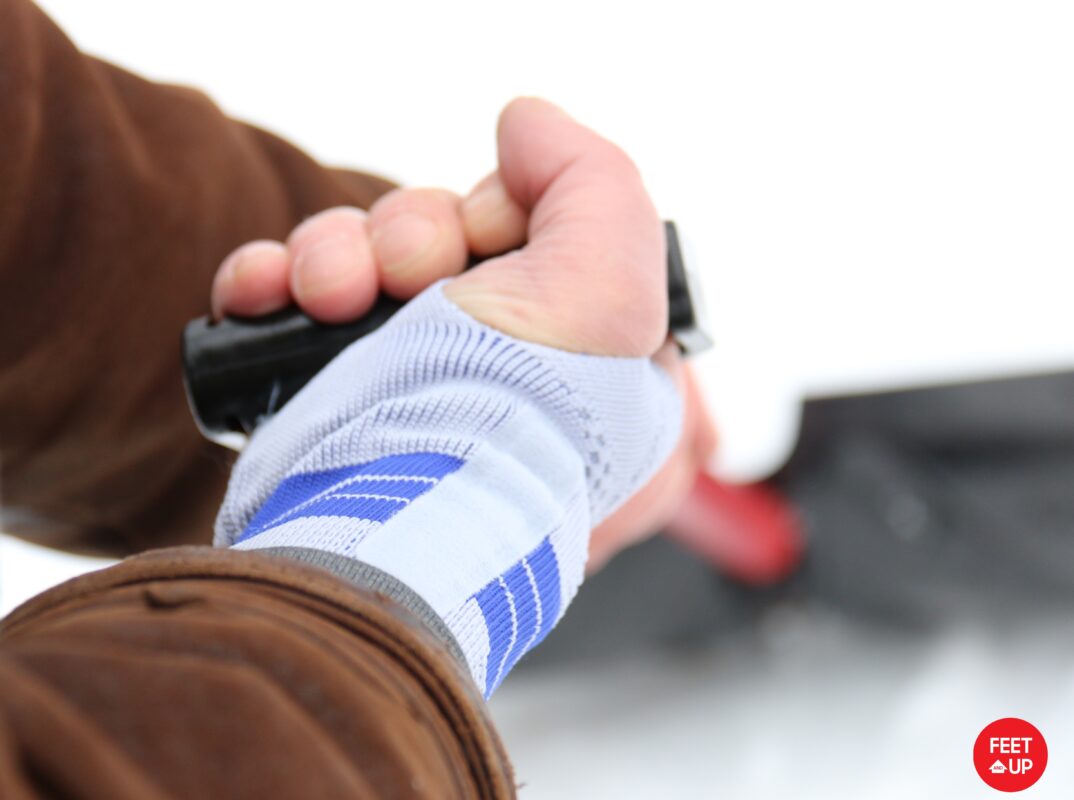Estimated reading time: 2 minutes
For many people, snow shoveling can lead to a number of health risks: from heart attacks to back injuries. The combination of cooler temperatures and physical exertion increases the workload on the heart. The weight of the snow and general poor posture while shoveling increases a person’s risk for lower back and shoulder injuries.
Consider these tips before you pick up the shovel:
- Drink plenty of water before and after shoveling.
- Wear layers of clothing that you can remove to keep your body temperature comfortable.
- Wear proper footwear with good tread to reduce slips and falls.
- Stretch your back, shoulders, arms and legs before you begin to avoid muscle strains. Warm up your muscles to increase blood flow, a brisk walk will do.
- Wear a back brace such as Bauerfeind’s LumboLoc Forte for extra support if needed.
- Use a lightweight ergonomically designed snow shovel to make the task as efficient and safe as possible. A plastic shovel is better suited than a metal one.
- Bend your knees and use your legs while lifting to avoid muscle strains. Scoop smaller piles of snow, heavier ones will tire you out faster.
- Position yourself to throw straight instead of twisting and turning.
- If possible, push the snow instead of lifting.
- Try shoveling every few hours instead of shoveling large amounts of snow all at once. Especially if the show is wet, it will be heavier.
- Rest often. If you experience chest pain or light-headedness stop immediately, seek medical attention if the symptoms persist. Also seek medical attention if back pain persists even after one day.
Snow shoveling is a workout if you’re doing it properly; you’ll be using your glutes, hamstrings, quads, abs, lower back, upper back and shoulders.
If you have known risk factors for cardiovascular disease or are recovering from a heart attack, do not shovel snow without clearance from your doctor.


